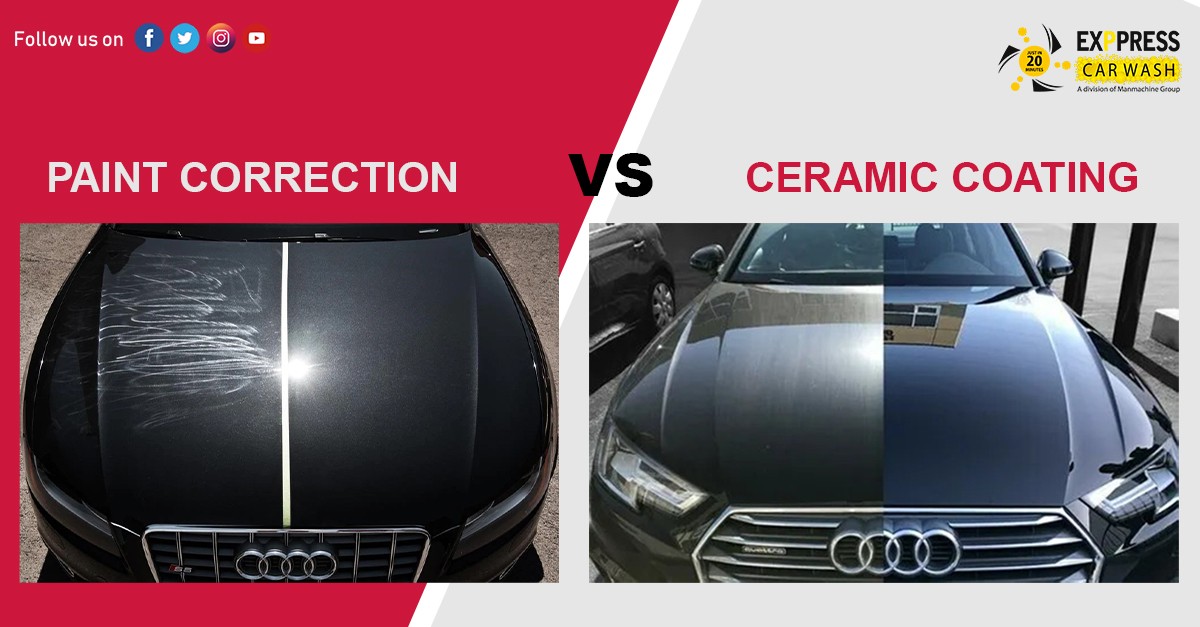Ceramic Coating: The Ultimate Option for Maintaining Your Vehicle's Luster
Ceramic Coating: The Ultimate Option for Maintaining Your Vehicle's Luster
Blog Article
Discovering the Scientific Research Behind Ceramic Finishing and Its Influence On Car Outlining
The application of ceramic layer in auto detailing stands for a substantial innovation in vehicle care, rooted in its sophisticated chemical homes, mainly silica dioxide and titanium dioxide. As we explore the complexities of the application process and the lasting effects for vehicle upkeep, it comes to be clear that the option of ceramic layer can basically change one's technique to cars and truck treatment.
What Is Ceramic Finishing?
Ceramic finishing is a modern remedy that has gained appeal in the vehicle describing market for its ability to provide durable security for vehicle surface areas. This sophisticated protective layer is typically made up of silica dioxide (SiO2), which develops a solid bond with the lorry's paint, producing a sturdy guard against ecological pollutants. Unlike conventional wax or sealants, ceramic coatings supply remarkable resistance to UV rays, chemical stains, and physical abrasions.
The application of ceramic coating includes a careful process, where the lorry's surface is extensively cleaned and sanitized before the layer is applied (Ceramic Coating). When cured, the coating boosts the car's gloss, deepness, and clarity, supplying a showroom-quality surface that lasts for years. One of the crucial advantages of ceramic coating is its hydrophobic buildings, which repel water and dust, making upkeep much easier and reducing the regularity of washes
The Chemistry of Ceramic Finish
An essential facet of ceramic covering hinges on its chemical make-up, primarily identified by the presence of silica dioxide (SiO2) This substance is essential to the formation of a durable, protective layer that bonds chemically to the vehicle's surface. When used, the SiO2 particles go through a process understood as polymerization, wherein they form a network of interconnected structures. This causes a durable, hydrophobic surface that pushes back water and pollutants.
Along with SiO2, numerous ceramic coverings include titanium dioxide (TiO2) and various other additives to enhance their efficiency attributes. TiO2, as an example, adds to boosted hardness and chemical resistance. The communication in between these compounds develops a special molecular structure that supplies a high level of protection versus environmental variables such as UV rays, acid rainfall, and oxidation.
Additionally, the application procedure commonly includes a meticulous prep work of the surface to make certain ideal adhesion of the finish. This chemistry not only makes certain a resilient finish however also improves the aesthetic charm of the car. Recognizing the complex chemistry behind ceramic coverings is essential for describing professionals that intend to offer premium security and long life for their clients' automobiles.
Benefits of Ceramic Finish
While describing specialists often highlight the advantages of ceramic finishings, their advantages expand much past aesthetic appeals. Ceramic finishes develop a hydrophobic surface area that fends off water, dirt, and gunk, significantly minimizing the frequency of washes and the effort required to maintain a vehicle's look.
Furthermore, ceramic coverings enhance the longevity of the lorry's coating. Unlike standard waxes or sealants, which may last a few months, ceramic layers can sustain for many years, offering a long-lasting solution for car treatment. This durability converts to cost financial savings, as proprietors are less most likely to need frequent reapplication.
In addition, ceramic finishes are resistant to chemical discolorations and etching, which can happen from acidic substances like bird droppings or tree sap. This resistance not just protects the vehicle's looks however also decreases prospective damages - Ceramic Coating. Generally, the investment in ceramic layer provides auto owners a significant return in regards to defense, simplicity of upkeep, and lasting aesthetic appeal, making it a significantly popular option in the world of automobile describing
Application Process Described

Once the surface area is effectively prepared, the ceramic finishing can be applied. Making use of an applicator pad, the service technician applies the coating in tiny areas, working in a crosshatch pattern to make certain even coverage.
As soon as treated, the ceramic coating develops a strong bond with the paint, giving improved protection and a glossy coating. Appropriate application is crucial to optimize the durability and performance of the ceramic covering.

Long-lasting Effect On Car Treatment
The long-lasting influence of ceramic layer on vehicle care is substantial, as it fundamentally alters how owners maintain their vehicles. By creating a sturdy, hydrophobic layer on the lorry's surface area, ceramic coatings decrease the adherence of dust, crud, and pollutants. This residential property decreases the frequency of washing needed, eventually conserving water and cleaning items.
Additionally, the UV defense offered by ceramic finishings helps to avoid oxidation and fading of the vehicle's paint, maintaining its aesthetic appeal and resale worth over time - Ceramic Coating. This safety barrier also reduces the chance of scratches and swirl marks, which are click this link usual issues in standard paint coatings
Furthermore, ceramic layers help with much easier upkeep, allowing proprietors to cleanse their vehicles with very little initiative. The smooth surface area makes it difficult for pollutants to bond, making it possible for simpler elimination during routine cleansing.
In the lengthy run, the investment in ceramic finishing might lead to cost financial savings in lorry care product or services. useful link On the whole, the sustaining benefits of ceramic finishings not just boost the appearance of automobiles yet additionally add to a more efficient and sustainable method to automobile upkeep.
Verdict
In verdict, the application of ceramic coating represents a significant development in automobile outlining, driven by its special chemical structure of silica dioxide and titanium dioxide. This innovation not just improves the aesthetic charm of cars however also offers robust protection versus ecological threats and put on. The long-lasting benefits, including reduced maintenance regularity and boosted durability, emphasize the worth of ceramic finishes as a crucial financial investment for preserving car appearance and integrity with time.

Report this page